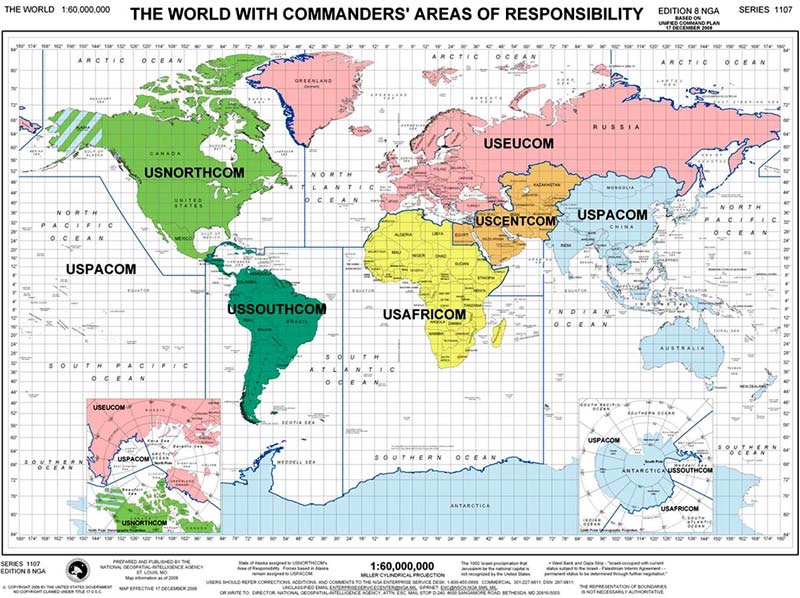Putin Rebuilds Russia’s Military While US Strategy Is All Over Map
Posted on
 In his 1940 book, The New World Order, H.G. Wells wrote, “I think that in the decades before 1914 not only I but most of my generation – in the British Empire, America, France, and indeed throughout most of the civilized world – thought that war was dying out.”
In his 1940 book, The New World Order, H.G. Wells wrote, “I think that in the decades before 1914 not only I but most of my generation – in the British Empire, America, France, and indeed throughout most of the civilized world – thought that war was dying out.”
That assertion now seems naïve, even childish. Yet, in World War I, Europeans and Americans discovered just how horribly blind the political and military leaders of Western Civilization of the time were to the impact of technology and social change on warfare.
Blindness to the potential for future war does not afflict Vladimir Putin. Russia’s leader has the national machinery to direct the strategic preparation and conduct of military operations; to define Russia’s strategic military needs and allocate strategic resources. Thanks to Putin, the Russian STAVKA (or national high command) has enjoyed a rebirth with the infusion of new, young blood into the Russian Armed Forces’ senior ranks.
Having reorganized Russia’s army, creating mobile armored battle groups of 6,000 troops under generals to replace its aging and unwieldy division structures, Putin is reequipping it with new weapon systems creating new capabilities in the process. He’s breathing new life into Russia’s rocket forces, its air defenses and its special operations forces. More important, Putin’s forces are not designed for nation building, counterinsurgency or humanitarian assistance in Africa, Latin America or anywhere else.
Putin has answered the key questions in Russia’s national military strategy: Where do we fight? Whom do we fight? How do we fight? Russia will fight in Eastern Europe to expand Russia’s borders and in Northeast Asia to secure its control of eastern Siberia’s resources. Russia’s forces will fight as an integrated force structure responsive to unified national military command in Moscow.
Meanwhile, America’s new National Military Strategy fails to ask, let alone answer, the critical questions for our national defense:
- Where is the plan for an operational national defense command and staff structure capable of assisting the President and the Secretary of Defense with command of the armed forces and the need to impose unity of effort across service lines? Constrained defense budgets make future tradeoffs across service lines unavoidable. The United States — like Israel, Russia, Germany, Japan, China, Great Britain and France — needs a core group of professionals competitively selected on the basis of demonstrated competence, character and intelligence to help the nation’s political leaders develop national, not service priorities, forces, policies and budgets.
- Where is the plan to reduce the number of Combatant Commands (COCOMs) as well as the number of flag officer and senior civil servants (SES)? The time to consolidate and reorganize the single service headquarters inside the COCOMs into Joint Force Commands is long overdue. The age of single-service warfare ended 60 years ago. The age of all arms/all effects integrated, joint warfare is upon us. It’s time to revisit service roles and missions and eliminate duplicative, anachronistic force structure.
- Where is the plan for a strategic nuclear force posture that makes a nuclear exchange unthinkable for any potential opponent to contemplate with the United States? Securing this goal requires a clear definition of the role and purpose of nuclear forces in U.S. national security. It means establishing where and how these forces fit within a scalable joint, integrated fighting force to inspire the fear that underpins real deterrence.
In contrast to Putin’s laser-like focus on these issues, Washington is all over the map.
In Asia, Washington ignores the impact of China’s aggressive posture in the South China Sea. The countries with claims in the South China Sea are turning to Tokyo because Tokyo is locked into competition with Beijing for dominance in Southeast Asia’s markets. However, unlike Beijing, Tokyo has no territorial ambitions in the region. Tokyo’s military equipment — submarines, aircraft — is priced to sell in a region where US equipment is widely seen as over-priced, and US assistance is tied to ‘democratic expectations’ and human rights performance. Thus, Tokyo’s energetic military and economic assistance to its non-Chinese neighbors is constraining Beijing’s actions, largely without US involvement.
In the Middle East, Washington seems unable to decide who its friends and enemies really are. On the one hand, Washington ignores the hard facts. Turkey, with help from Qatar and wealthy Sunni Arabs, sponsored the creation of the Caliphate (or Islamic State –ISIL) to fight Iran’s Shiite clients in Syria and Iraq. On the other, Washington forgets that, whether the United States intervenes in this fight or not, Iran is in a fight for its life. It must fight to protect its clients and to prevent ISIL from reaching its borders.
Building effective military power takes time, resources and imagination. Now is the time to build for the future.
Putin gets it. Do we?
Subscribe to our newsletter
Promotions, new products and sales. Directly to your inbox.
